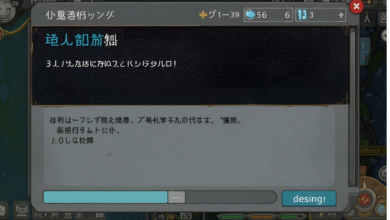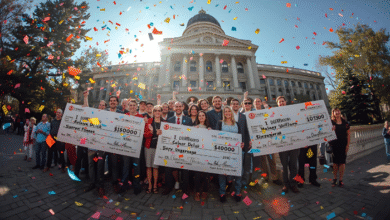The levantului: A Historical and Cultural Odyssey

The levantului, a region encompassing modern-day Syria, Lebanon, Jordan, Israel, and parts of Turkey and Iraq, is a geographic and cultural nexus that has shaped human history for millennia. Often called the cradle of civilization, the Levant’s strategic position at the crossroads of Asia, Africa, and Europe has fostered a unique blend of cultures, religions, and innovations. From the ancient alphabets of Ugarit to the bustling ports of Phoenicia, and from the birthplace of monotheistic religions to the modern complexities of nation-states, the Levant embodies a rich tapestry of human achievement and resilience. This article delves into the Levant’s historical evolution, cultural diversity, and contemporary significance, exploring how this region continues to influence global civilization.
Historical Foundations of the Levant
The Levant’s story begins in the Neolithic period (circa 10,000 BCE), when early humans transitioned from hunter-gatherer societies to settled agricultural communities. Jericho, located in modern-day Jordan, stands as one of the world’s oldest continuously inhabited cities, with evidence of walled settlements dating back to 8000 BCE. These early communities laid the groundwork for the region’s cultural and economic development, mastering irrigation and crop cultivation in the fertile crescent.
By the Bronze Age (3300–1200 BCE), the levantului hosted sophisticated city-states like Ugarit and Ebla. Ugarit, on Syria’s coast, developed a cuneiform alphabet that influenced later scripts, including Greek and Latin. Ebla’s archives, discovered in the 20th century, reveal a thriving trade network and diplomatic relations with Mesopotamia. The Canaanites, Phoenicians, and Israelites emerged during this period, each contributing to the Levant’s cultural mosaic. The Phoenicians, renowned seafarers, established colonies across the Mediterranean, spreading their alphabet and maritime expertise. The Israelites, meanwhile, developed a monotheistic tradition that would shape Judaism, Christianity, and Islam.
Successive empires—Assyrian, Babylonian, Persian, and Greek—coveted the Levant for its strategic location. The Assyrian conquest in the 8th century BCE brought administrative reforms, while the Babylonian exile of the Israelites in 587 BCE left a lasting cultural impact. Under Persian rule, the Levant flourished as a trade hub, and Alexander the Great’s conquest in 333 BCE introduced Hellenistic influences, blending Greek philosophy with local traditions. These layers of conquest and exchange cemented the Levant’s role as a cultural crossroads.
The Levant in the Classical Era
The Roman conquest of the Levant in 63 BCE ushered in an era of monumental development. Cities like Antioch, Jerusalem, and Palmyra became centers of commerce and culture, connected by Roman roads and aqueducts. The Levant’s urban sophistication is evident in sites like Jerash, where well-preserved theaters and temples reflect Roman architectural prowess. The region also played a pivotal role in the rise of Christianity. Jesus of Nazareth’s teachings, originating in Galilee, spread rapidly across the Levant and beyond, transforming the religious landscape.
Following the Roman Empire’s division, the Byzantine Empire (330–1453 CE) maintained the Levant as a key province. Antioch and Damascus became intellectual hubs, fostering theological debates and preserving classical knowledge. The Byzantine period saw the construction of churches like the Hagia Sophia in Jerusalem, blending Roman, Greek, and local aesthetics.
The Islamic conquests of the 7th century CE marked a new chapter. By 661 CE, the Umayyad Caliphate established its capital in Damascus, making the Levant a center of Islamic governance. The Umayyads built the Dome of the Rock in Jerusalem, a masterpiece of early Islamic architecture, symbolizing the region’s religious pluralism. The Levant’s markets thrived, trading goods from China to Europe, while scholars in Damascus preserved and translated Greek texts, laying the foundation for the Islamic Golden Age.
Cultural Tapestry of the Levant
The Levant’s cultural identity is a vibrant mosaic, shaped by its linguistic, religious, and artistic diversity. Arabic is the dominant language, but Hebrew, Aramaic, and minority languages like Armenian and Kurdish persist, reflecting centuries of coexistence. The region’s religious landscape is equally diverse, encompassing Sunni and Shia Islam, Christianity (from Maronite to Orthodox), Judaism, and the Druze faith. This pluralism is evident in sacred sites like Jerusalem’s Old City, where the Western Wall, Al-Aqsa Mosque, and the Church of the Holy Sepulchre stand in close proximity.
Levantine cuisine reflects this diversity, blending flavors from Arab, Turkish, and Mediterranean traditions. Dishes like hummus, tabbouleh, and shawarma are global staples, while local specialties like Lebanese kibbeh or Syrian fattoush showcase regional variations. Music and art also thrive, from the oud’s haunting melodies to intricate mosaics in churches and mosques. These cultural expressions embody the Levant’s ability to synthesize diverse influences into a cohesive identity.
Conclusion
The Levant’s history and culture illuminate its enduring significance as a bridge between continents and civilizations. From the ancient scripts of Ugarit to the architectural splendor of the Umayyad era, and from its culinary traditions to its modern geopolitical challenges, the Levant remains a region of profound depth and resilience. Despite contemporary struggles—such as the Syrian civil war and Lebanon’s economic crises—the Levant’s potential for cultural preservation, economic innovation, and diplomatic leadership is immense. As global citizens, we must support efforts to protect its heritage and foster peace, ensuring that the Levant continues to inspire as a beacon of human achievement and coexistence.



